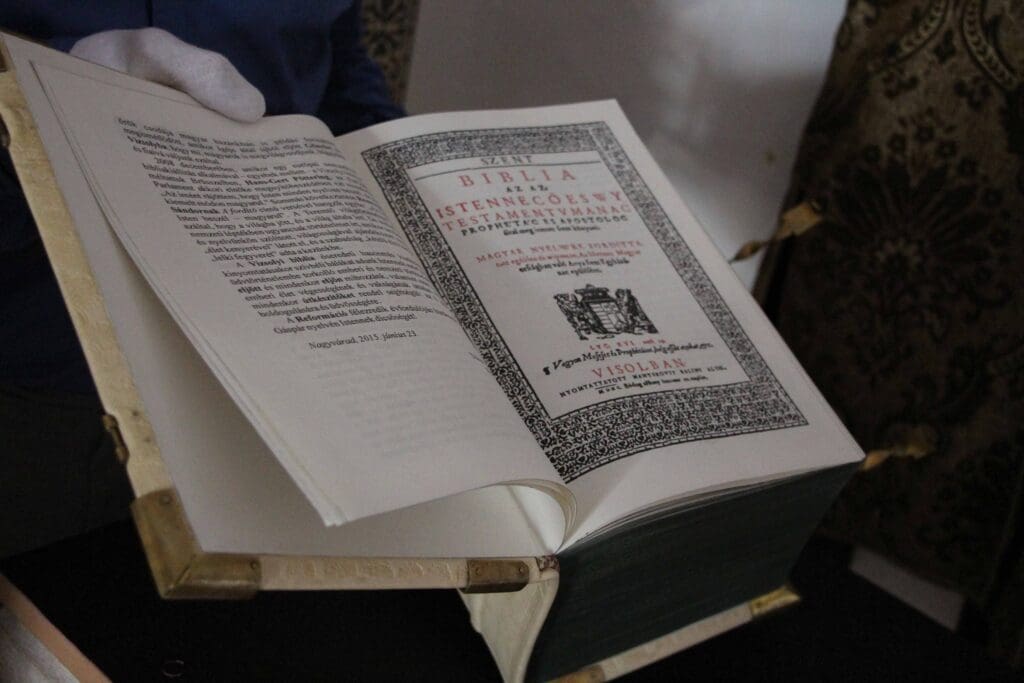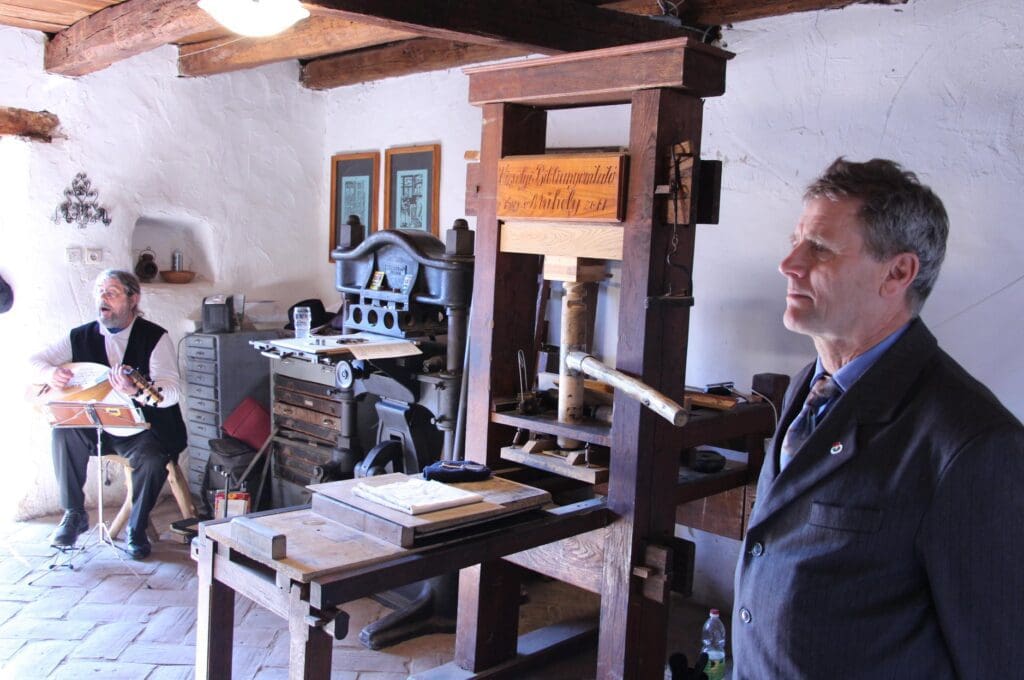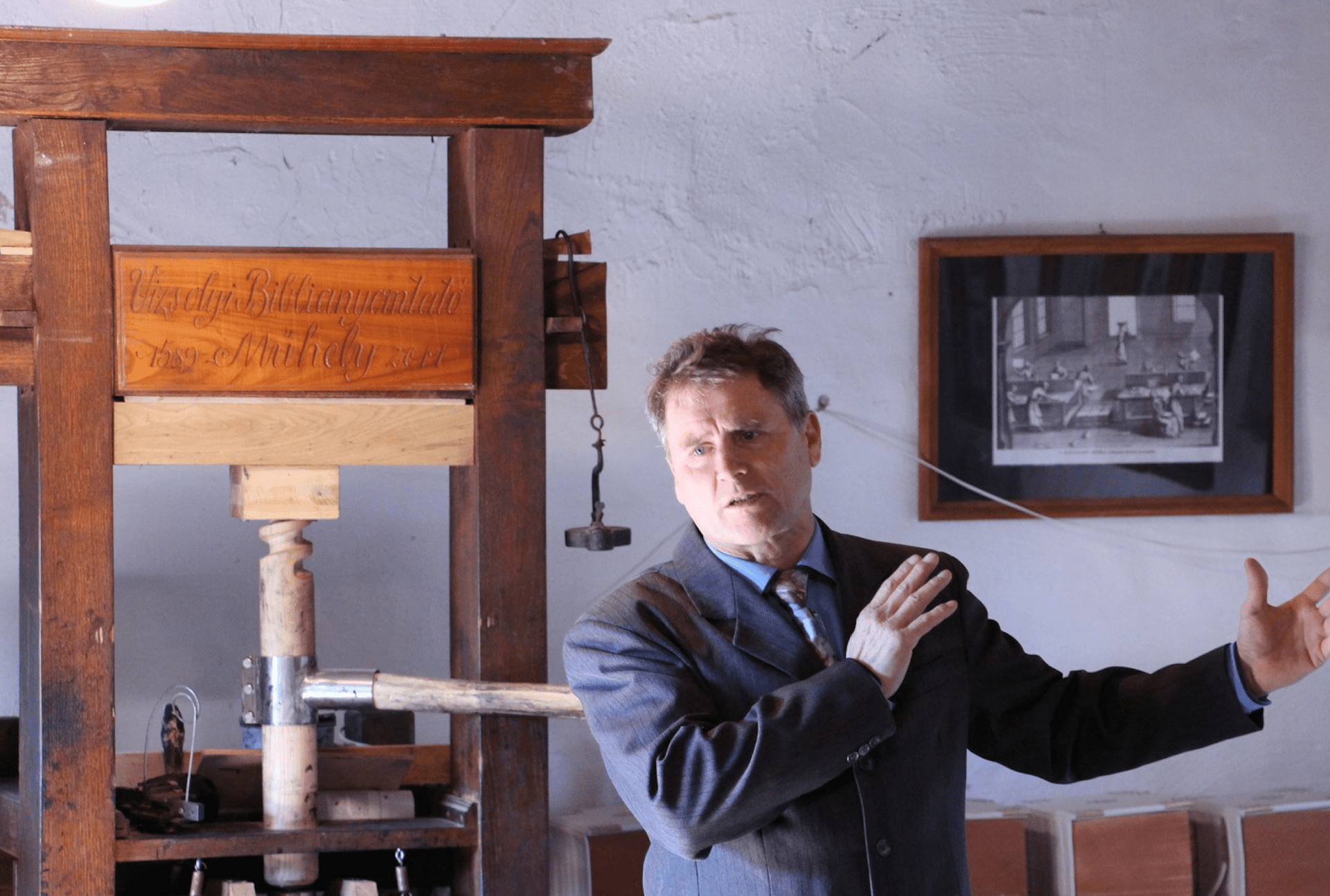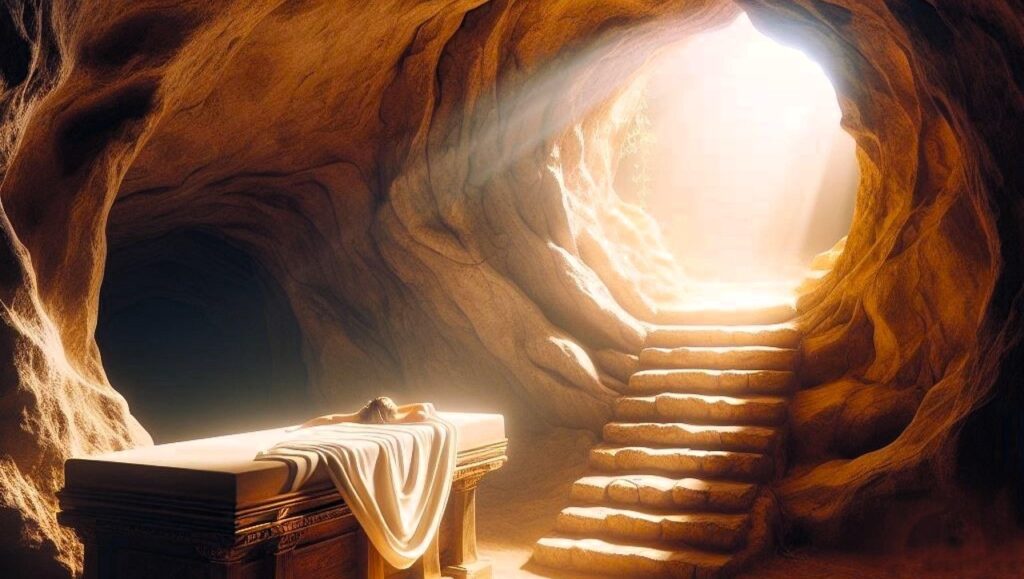More than a decade ago, Mihály Daruka decided to do something that no one else in the Christian world had ever done before: print 200 copies of the first Hungarian Bible, in its original form, with period equipment, with the help of the best printing masters in the country. Doing all this in the same place where the first Hungarian Bible was printed back in 1590: in a village in North-Eastern Hungary called Vizsoly.
The Vizsoly Bible, translated from Latin into Hungarian by Gáspár Károlyi and his fellow clergymen and printed by Polish typographer Bálint Mantskovits, is the oldest surviving complete Hungarian-language Bible. The translation of the Book of Books into Hungarian not only contributed to the spread of the Reformation in Hungary, but also had a fundamentally important effect on the social and cultural development of the country. On the occasion of the 505th anniversary of the Reformation, Hungarian Conservative interviewed Mihály Daruka, the visionary behind the reprinting of the Hungarian Bible.
What is the significance of Vizsoly in the religious and cultural development of Hungary?
There had never been a printing plant in Vizsoly before 1586 (when the printing started) and there was none after it either. Zsigmond Rákóczi, duke of Transylvania and lord of Vizsoly, hid the most modern printing press of the time here, so that he could print 7-800 copies of the Bible translated into Hungarian. For he knew that this would bring the Reformation to fruition in Hungary, the Austrian Emperor strictly forbade the translation of the Bible into Hungarian. He also knew that the Catholic church and the empire would also lose some of their control over the nations if the Bible was put into the hands of the people. It was Luther’s vision to give the Bible back to the nations, so that everyone could read it in their own language, thus avoiding the deceptions of the Catholic Church. What was done then in Vizsoly could not even be approached by the Hungarian printing press for nearly a hundred years. Therefore, from the point of view of printing history, the Vizsoly Bible was an outstanding achievement.

The Bible, translated by Gáspár Károlyi in the dialect of Zemplén-Abaúj County, would later become the basis of the Hungarian literary language. Ferenc Kazinczy, a leading figure in the renewal of the Hungarian language, used this Bible in the creation of the unified Hungarian literary language. That is why, after more than 400 years, we can still read and understand the Bible translated at that time. Hungarian language has changed very little since then. This is not true of the German or French translations from the same epoch. That is the other major significance of Vizsoly and of the Bible translated and printed here in the 16th century.
How did you settle in Vizsoly and where did the idea of reprinting the Vizsoly Bible come from?
I might say that I came to Vizsoly by chance, but I now know that this is not the case. I think I was part of a plan. I had a woodworking business in Sajóbábony for 25 years, which went bankrupt overnight in 2005. In its heyday, the 600 square metre plant was turning out hundreds of millions of lightweight houses. I make no secret of the fact that the bankruptcy left me in a deep depression, and although I continued to work as a carpenter to support my family, I found little motivation in my daily life, feeling that I had lost my purpose in life when I lost my company. But now I know that this period was about God preparing me for what I do today.

During this time, I heard a radio programme in which the mayor of Vizsoly complained that although the town had 40,000 tourists per year, there was not a single restaurant or café where these people could sit down. That got me thinking. Forty thousand tourists and no one to take care of them? I thought, well, I’ll go and see for myself. And I realized that what the mayor said was indeed the case. Crowds of tourists arrived in Vizsoly, and after seeing the church, they left, knowing they had nothing else to do there. So, I knew that a restaurant had to be built in the vicinity of the church. That’s when I saw the Rákóczi mansion opposite the church, the place where the first Hungarian Bible was printed. The house was a ruin, it had stood empty for 18 years and had 35 owners. So, selling it was not easy. I still managed to buy it at a reasonable price, albeit on credit, and I know it was a miracle from God. At that time, I had no intention of printing a Bible at all, I only wanted to sell coffee to tourists.
One morning, however, I woke up dreaming that I was reading a sign on the house that said: this is the house where the Vizsoly Bible was printed. I thought to myself, I’m a complete idiot, I didn’t come here to make coffee, I came here to have the Bible printed. So, after I had convinced my business partners, work started in 2011 and we decided that by 2017, for the 500th anniversary of the Reformation, we would have 200 copies of the original Vizsoly Bible ready. All this would be done in an authentic environment, using only the original technology and materials, including the printing press, types and paper.
Printing started on 18 February 2015. The printing press, a reproduction of a 16th century water mill- powered rag paper press, was completed. The printing team hand-carved the 375 moveable types needed to produce the letters and learned how to recreate the original paper used in the 16th century. The closest European country that still uses this ancient papermaking technology was in the Netherlands but importing the paper would have been extremely expensive. Hungary’s finest craftsmen worked to ensure that the printing was done in the most authentic way possible to honour the Hungarian printers and reformers of the 16th century. As Vizsoly’s pastor was in contact with the Hungarian Vizsoly Bible Society, they were the first to learn of the project, and their leader, historian Géza Szabó Szentmártoni, approached Mihály Daruka and gave him authentic documents about Mantskovits’ itinerant printing press. It was based on that documentation that Daruka made the printing machine. He had travelled to the Gutenberg printing house in Frankfurt am Main where he was allowed to photograph and measure the types. He also contacted the only living master typesetter in Hungary, György Timkó. When the first letter, an L, was cast, they agreed that if one type could be made from lead, then it would be no problem to print 200 Bibles.
The project was partly self-funded and partly financed by individual sponsors, Mihály Daruka explained. ‘And after many financial difficulties, I decided to give the 200 copies of the Bible printed to the most deserving people who were willing to donate from their own money. Each copy is individually named and numbered for those who are willing to spend €4,000 on a copy.’
I suppose there were a number of hurdles to overcome in carrying out such a project. Have you ever had moments when you would have preferred to back out of this venture?
I’ll be honest with you: in 2012, after a lot of criticism, envy and difficulties, I told the Lord I’d rather go back to being a carpenter and not do the printing anymore. The next day, I was hit in the head with an axe in my own backyard and thrown into the icy waters of a nearby lake. After I was operated on and miraculously survived, I actually repented on the hospital bed and said: very well, Lord, tell me what you want from me. After that I knew that I would go back to Bible printing and now I am convinced that I was born to do that.
As planned, Mihály Daruka successfully completed the printing of the 200 copies of the Vizsoly Bible by 31 October 2017. Then, as he had promised, he destroyed most of the tools used. Thus, the 200 copies of the Vizsoly Bible are truly unique, limited and unrepeatable. During our interview Mr Daruka was just about to deliver the 113th book to a funder, or, as he called the person, a ‘guardian’. ‘After all, the 200 people who are willing to spend their own money on a Bible like this will proudly guard these books for the rest of their lives, and even for generations, as a symbol of the sacrifices our ancestors were willing to make for their faith,’ Mr Daruka concluded.
For information about how to donate you can contact Mihály Daruka by email at biblia.vizsoly@gmail.com.








